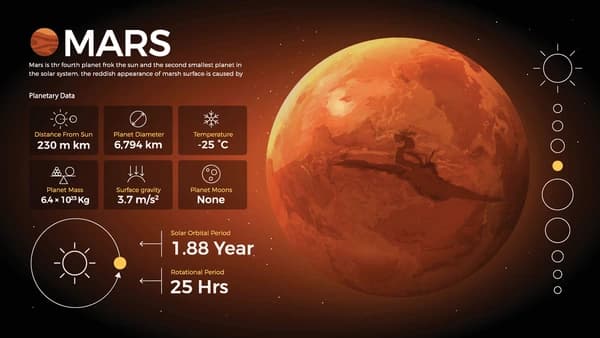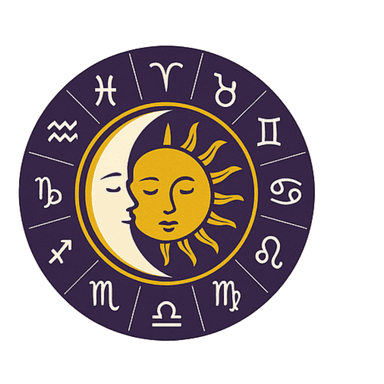Story of Mars (Mangala, Kuja) in Vedic Astrology

The Birth of Mars: Son of Earth and Shiva’s Blessing
According to most Puranic legends, the origin of Mars is unique among the planets. After a cataclysmic event, Mother Earth (Bhumi Devi) absorbed a drop of sweat (or blood) from Lord Shiva, which was charged with divine energy after one of Shiva’s intense battles or his Tandava dance. This drop sank deep into the Earth, and from it emerged Mangala—a radiant, red-complexioned youth, embodying the vigor, resilience, and fiery will of his paternal lineage.
In gratitude and recognition, Lord Shiva himself appointed Mangala as a planet and a guardian of dharmic (righteous) principles and earthly realms. Mars’s designation as Bhumi Putra (son of Earth) symbolizes his deep connection with land, real estate, home, and all things rooted in material experience.
Mars and Kartikeya: The God of War Parallel
In parallel traditions, Mars is often linked—symbolically or genealogically—with Kartikeya (Skanda, Murugan), Shiva’s son and the commander-in-chief of the celestial armies. Kartikeya was born of Shiva’s seed (sometimes said to be placed in water and then nursed by the Krittika stars), his destiny being to destroy the demon Tarakasura. Like Kartikeya, Mars represents courage, martial skill, and the sacred duty to battle ignorance and tyranny.
Mangala and the Markandeya Purana: Auspiciousness and Overcoming Obstacles
The name Mangala means “auspicious,” yet his influence is both feared and revered—Mars can incite conflict, but also bestow victory and positive transformation. The Mangala Kavacha Stotram, found in the Markandeya Purana, is recited for his protection, a shield against accidents, adversaries, and all forms of negativity. Inauspicious Mars in a natal chart is believed to cause “Manglik Dosha,” said to bring challenges in marriage, but prayers, rituals, and conscious self-discipline are remedies advised to harmonize this fiery energy.
Symbolism and Iconography of Mars
Mangala is depicted as a youthful, muscular, red-hued deity, bearing weapons and riding a ram. His face reveals determination and alertness—not reckless aggression, but principled action. Mars embodies:
- Strength, courage, and endurance
- The spirit of competition, anger, and self-defense
- Engineers, surgeons, military and police, athletes
- Younger siblings, especially brothers
- Blood, sexuality, and vital force
- The ability to “cut” away falsehood and repair what’s broken
His red coral gem, Tuesday observance (Mangalvar), and South direction are all linked to his energy.
Mars in Vedic Astrology: The Fire of Righteous Action
In astrological symbolism, Mars rules Aries (Mesha) and Scorpio (Vrishchika), is exalted in Capricorn (Makara), and debilitated in Cancer (Karka). He governs the third and sixth houses (valor, struggle), as well as blood, muscles, bone marrow and vital drive.
A strong Mars offers self-discipline, ambition, engineering acumen, leadership, and healthy assertion. A weak, afflicted, or excessive Mars can indicate anger issues, recklessness, accidents, disputes, or violence. Mangala’s placement defines one’s ability to face life’s crises with poise, defend their boundaries, and pursue goals with fiery focus.
Mars in Hindu Ritual and Remedies
Mars is worshipped through mantras (“Om Angarakaya Namah”), Tuesday fasts, donation of red clothes, coral, and lentils, and performance of Hanuman Puja or Shiva worship. Kumbh Vivah or ritual marriage to a sacred object is often employed as a remedy for Manglik Dosha, harmonizing one’s martial energy for constructive use.
Conclusion: The Sacred Defender
Mars’s myth is not just a tale of war, ambition, or raw force. In Vedic tradition, Mars ultimately exists to protect dharma, cut away what is diseased, and ignite the fire of positive transformation. Whether as the son of the Earth, the inheritor of Shiva’s might, or as the cosmic engineer of destiny, Mangala teaches us that true strength serves order, duty, and righteous purpose.
In life—and in the stars—Mars is the force that says “enough,” that draws the line between chaos and order, and reminds us that sometimes, the path to peace must pass through the battlefield of self-mastery.
